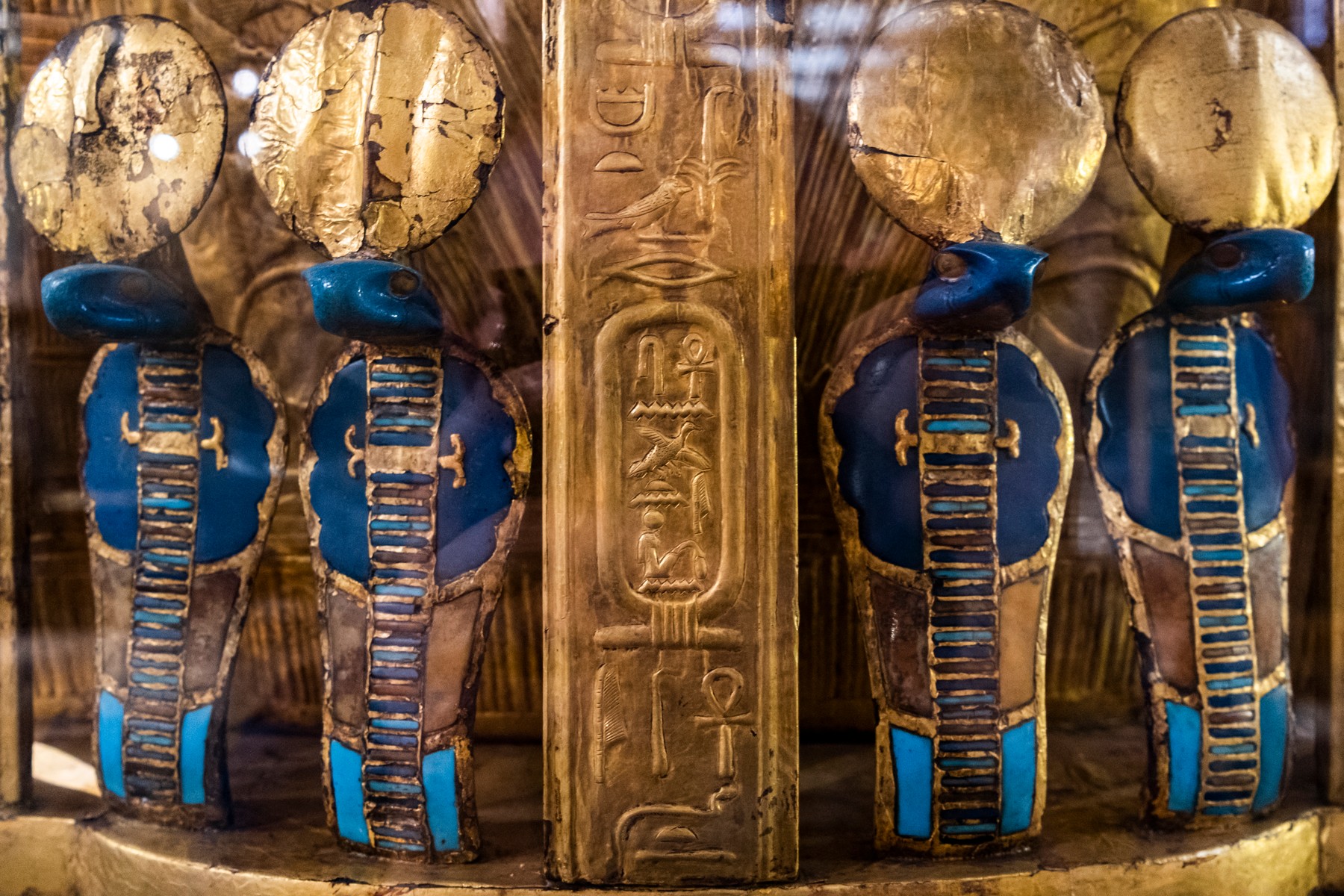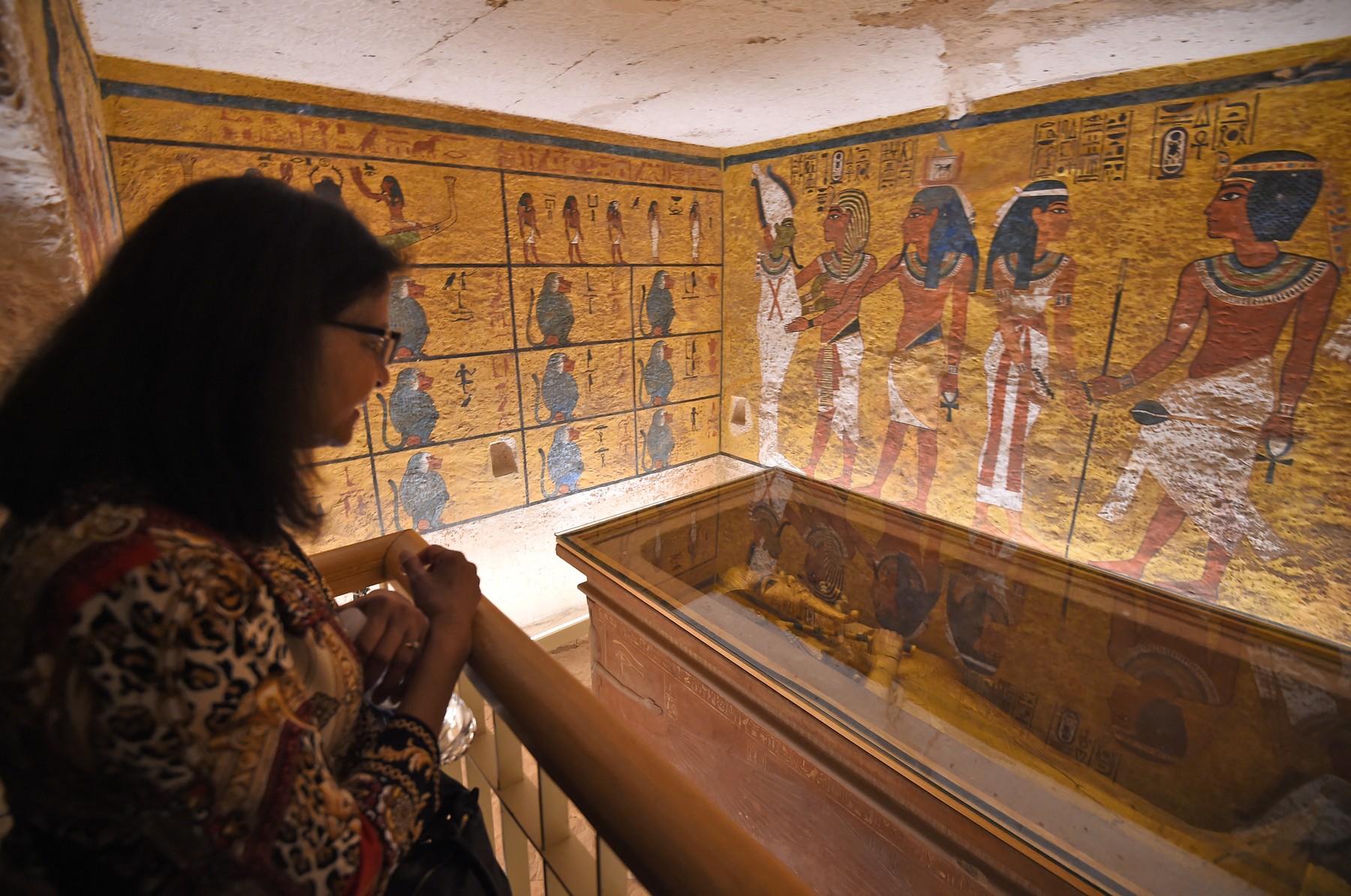
On February 16, 1923, English archaeologist Howard Carter (1874-1939) entered the burial chamber of Pharaoh Tutankhamun, the last of the four chambers of the tomb located in the Valley of the Kings in Egypt, History.com reports. from Agerpres.
When Englishman Howard Carter arrived in Egypt in 1891, he was convinced that there was at least one undiscovered tomb, specifically that of the lesser-known 18th Dynasty boy pharaoh Tutankhamun, who lived around 1400 BC. and died at the age of 18-19. With the support of the rich Lord Carnarvon, Carter unsuccessfully searched for five years.
In early 1922, Lord Carnarvon wanted to call off the search, but Carter persuaded him to give it another year. In November 1922, the wait paid off.
Discovery of Tutankhamun’s tomb in the Valley of the Kings
Carter’s team found a staircase hidden under the debris near the entrance to another tomb. Steps led to an ancient door, on the seals of which was written the name of Tutankhamun. When Carter and Lord Carnarvon entered the antechamber of the tomb on November 26, they were delighted to find it virtually untouched, its treasures untouched after more than 3,000 years.
On February 16, 1923, Carter opened the door to the last room – the burial chamber of Pharaoh Tutankhamun – where there was a stone sarcophagus with three other coffins one inside the other. In the last coffin, made of solid gold, lay the mummified body of Tutankhamun.

PHOTO: IanDagnall Computing / Alamy / Profimedia Images
Two months later, Lord Carnarvon died of an infection caused by a mosquito bite. His sudden death spawned rumors—and many creative articles—about a curse that brings death or misfortune to those who disturb the pharaoh’s resting place.
Carter continued his work with the support of Lord Carnarvon’s widow. But when the Egyptian authorities began to be more actively involved in the discoveries made, Carter stopped his work in protest. It took him nearly a year to regain access, and only after he and the countess relinquished all claim to the pharaoh’s burial goods, National Geographic reported.
When he resumed work in 1925, Carter and his team concentrated on opening the coffins, a difficult task that required unparalleled skill.
The first two coffins were made of cedar wood, and the third coffin was made of pure gold and weighed almost 114 kg. Inside were the mummified remains of the pharaoh, with a stunning burial mask of pure gold covering his head and shoulders – an artifact destined to become a symbol of Egypt’s impressive past.

PHOTO: Tara Todras-Whitehill / Associated Press / Profimedia Images
Treasures discovered in the tomb of Tutankhamun
The examination of the mummy took place over several days in October and November 1925 and was carefully recorded in Carter’s diaries. The golden mask remained immobile as the team examined the mummy layer by layer to prevent damage.
The pharaoh had the pose of Osiris, the god of the dead, with golden arms crossed, holding a hook and a whip. Gold bands inlaid with colored glass and semi-precious stones, with intricate patterns and hieroglyphics, wrapped the mummy. The toes were protected by golden thimbles, the feet were neatly shod in pure gold sandals.
After uncovering the decayed layers of tissue from the left hand, the team discovered hinged bracelets and rings. Some items had a fine grain pattern of electrum, a mixture of silver and gold. Jewels represented the young king, his name, scarabs and gods.

PHOTO: Amir Akar / AFP / Profimedia Images
During the ancient process of preparing the pharaoh’s body, which traditionally took 70 days, priests removed Tutankhamun’s internal organs and brain without the heart and applied a special resin.
Then the bodies were placed in canopies — special funeral vessels, on the lid of which the head of a person or an animal was depicted. According to National Geographic, in all, ancient embalmers hid more than 140 precious objects between the 17 layers of thin linen bandages delicately wrapped around Tut’s remains.
A series of autopsies, X-rays, CT scans and DNA tests conducted over the past century have attempted to shed light on Tutankhamun’s origins, life and death. However, the evidence that has been uncovered time and time again points in multiple directions and is open to interpretation.
What is known about Pharaoh Tutankhamun
He was born during the reign of Pharaoh Akhenaten, when the traditional worship of a pantheon of gods was replaced by the worship of a single deity – Aten, the Sun God.
Tutankhamun ascended the throne at the age of eight or nine, and later under him there was a revival of the old practices, no doubt guided by advisers and priests who sought to restore their status.
When he died at the age of 18 or 19, their images, as well as objects specially created for the funeral and the legacy of his predecessors, went with him to the grave.

PHOTO: Mohamed el-Shahed / AFP / Profimedia Images
More than 5,000 objects, from miniature agricultural implements to golden altars, were placed in the 1,200 square meters of the four-chambered tomb.
Along with the mummy of Pharaoh Tutankhamun, clothes, games, jewelry, weapons, statues, furniture, oil and perfume containers, food and wine, two small linen vessels, musical instruments, and a small army of servants were found.
Most of the items had his name written on them or his picture.
All the objects found were carefully cataloged over a period of ten years and exhibited in the Egyptian Museum in Cairo. Since 1960, exhibitions of items from Tutankhamun’s treasures have been held in other museums abroad.
For more information from the world of science, you can also find us on our new Facebook page HotNews.ro Science. We are one click away.
Source: Hot News
Ben is a respected technology journalist and author, known for his in-depth coverage of the latest developments and trends in the field. He works as a writer at 247 news reel, where he is a leading voice in the industry, known for his ability to explain complex technical concepts in an accessible way. He is a go-to source for those looking to stay informed about the latest developments in the world of technology.